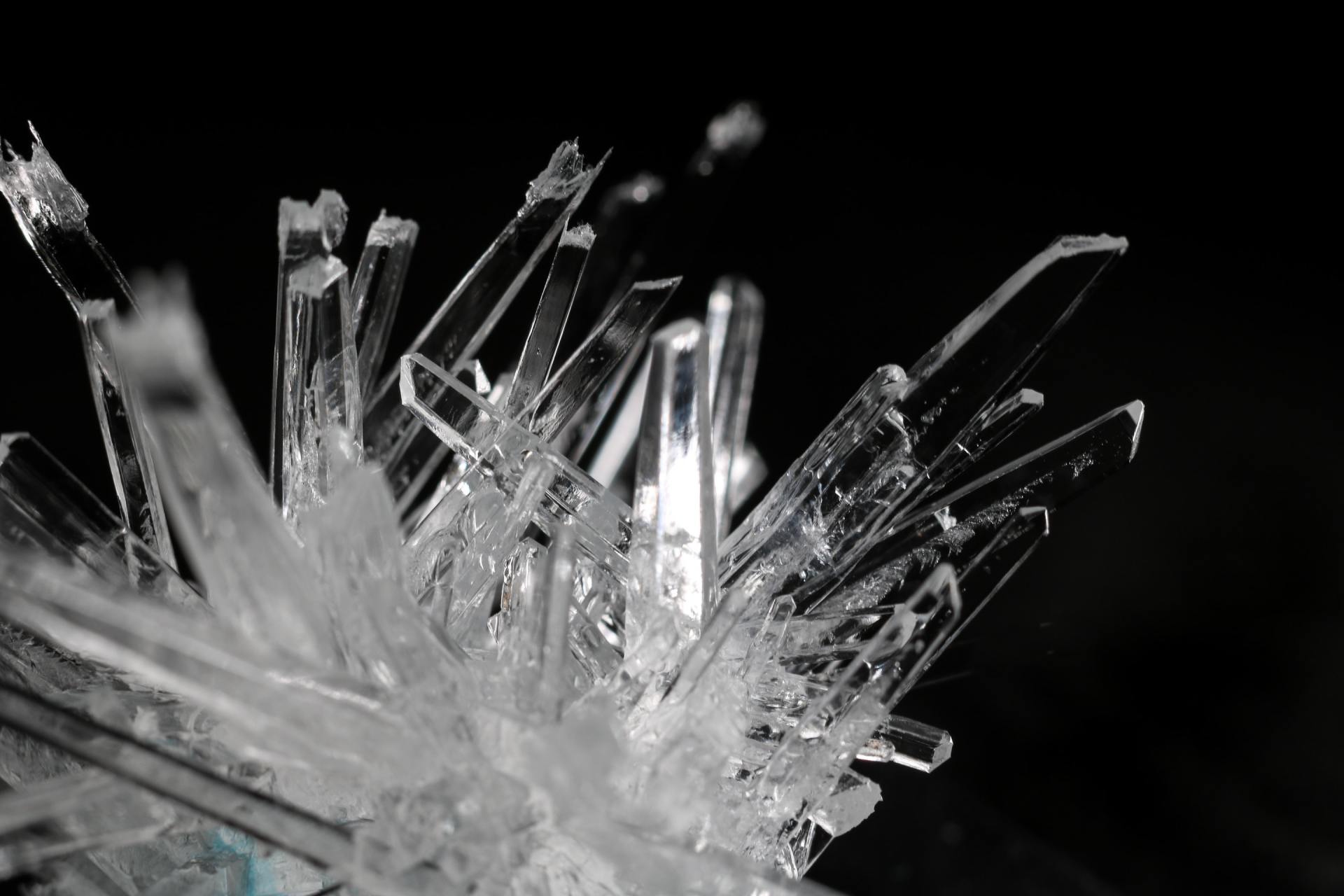SILICON – The “Miracle” Trace Element?
Silicon is the second most abundant element in the earth's crust, exceeded only by Oxygen.

In this Quartz Crystal form, the Silicon is unavailable to the plants.
Mineral soils are derived from rocks that contain about 30% Silicon (Si). Silicon is the second most abundant element in the earth’s crust, exceeded only by Oxygen. Growing in soil, plant roots are literally surrounded by minerals containing Silicon. Although all plants use at least a little Si, it has not been shown to be necessary for all plants; hence, it does not attain the “required” list of elements for plants. In 2011, the Association of American Plant Food Control Officials listed Silicon as ”beneficial” for plants. The designation reflects the many scientific findings showing Si is necessary for some, but not all plants.
However, the growing recognition of the benefits of Si is now seen in the occasional listing of available Si as part of the “guaranteed analysis” printed on fertilizer labels. Yet, the role of Silicon in plant nutrition is often considered to be of secondary importance - or worse yet, not acknowledged at all. This is probably due to the lack of a complete understanding of how Si functions in plants. In addition, the myriad different effects of Si make definitive statements difficult.
The chemistry of Si can be very complex. The most common chemical form in minerals is SiO, which is the smallest unit of very large polymers made up of long chains of SiO. In this form, such as in the quartz sand particle derived from quartz, it is unavailable to plants.
Even though plant roots are surrounded by this form of Si, they cannot use it. But the activity of roots and of microbes in the soil bring some of the Si into solution, creating a different chemical form, SiO4 (silicate) that plants can take up. In soil solution, its usual concentration is 3 to 17 ppm.
The most common form in soil solution is silicic acid, H4SiO4, which is readily absorbed by plants. The amount contained in plants ranges from 0.20% to 10% depending on the type of plant. It is interesting that this concentration range is essentially the same as that for Calcium (Ca), Magnesium (Mg), Phosphorus (P) and Sulfur (S); all of these are listed as essential nutrients.
Most plants grow in soils dominated by silicates, and the soil solution surrounding the roots contains Si at concentrations exceeding those of Phosphorus (P) by a factor of 50 or more. As plants absorb it, their Si content approaches the same range as that of the macronutrient elements. Therefore, Si fertility is an important part of the overall fertility plan for crop management. Often, there is enough Si in soil solution to meet the needs of a growing crop, but plenty of instances arise where the capacity of the soil is insufficient to satisfy crop needs.
Silicon is often found deficient is acidic soils and in climates of high rainfall, such as in tropical environments. Any highly-leached system, accordingly, can fail to provide enough Si to benefit plants. Silicon can also be limited in high pH soils, which are common in the western U.S. and many other locations. The fact is, Si deficiency symptoms are subtle leads to the general assumption that it might not be so important. But the benefits seen in systems where supplemental Si is used are additive and, overall, can be quite remarkable.
The list of Si benefits to plants include:
- improvement in chemical composition; Si has been shown to promote the uptake of Phosphorus and other nutrients; to improve the distribution of those nutrients, especially trace elements among the plant tissues; and to inhibit the uptake of excessive amounts of Manganese and other elements that can become toxic.
- improved stems and leaves; promotes proper orientation to the sun for photosynthesis.
- improved reproductive growth; maturation of pollen and flowers.
- improved enzyme activities, especially those associated with reproduction and cell elongation.
- improved resistance to diseases and insects; increased cell "toughness" makes it more difficult for fungi and insects to puncture plant cells.
- improved salt tolerance; Si inhibits the uptake of excess Sodium, and helps regulate water loss around roots in salty soil.
- improved water use efficiency: Si aids internal water relations in plant by slowing transpiration, making plants more resistant to water stress.
- improved resistance to heat or cold stress: Si helps in protecting plant membranes to keep them functioning longer in the face of temperature extremes.
- improved post-harvest or keeping quality (shelf-life) of produce. Much of this relates to better plant cell stability which can reduce disease, especially storage rots.
- improved resistance to lodging in small grains due to increased rigidity of cell walls.
Silicon deficiency can be diagnosed by a summation of individual symptoms that cannot be attributed to other causes. For instance, flower buds of strawberry can be smaller than normal and, with associated pollen problems, result in poor fruit set and maturation. If Boron is exonerated, the malady may be due to Si deficiency. In some plants, leaf defects are noticeable, such as curling, excessive thickening, and other morphological anomalies. Leaves can be pale, yellowing slowly over time. Necrotic lesions may appear on older leaves that are not caused by disease microbes. Various other metabolic and reproductive problems may reduce the vigor, yield, or quality of crops without signal symptoms ever appearing. These problems often return because Si is not recycled like other nutrients. Hence, re-application on at least an annual basis will probably be necessary. This may explain why appropriate plant tissue analyses are essential for properly identifying nutritional deficiencies.
Some plants are Si-accumulating but also, there are non-Si-accumulating plants. Grass-type plants, such as cereal grains, corn, sugar cane and sorghum tend to accumulate more Si than broadleaf-type plants, such as cotton, soybeans, and dry beans. Some plants concentrate the Si taken up by producing for storing Si. Phytoliths are microscopic “plant stones” comprised mainly of silicon dioxide produced within plant cells during normal growth.
Phytoliths are microscopic "plant stones" comprised mainly of silicon dioxide.
Plant uptake and use of Si varies greatly. Plant Si concentrations range from 10-15% in grasses and less than 1% to about 3% in dicots. In rice, it is generally acknowledged that Si is required. Other evidence is accumulating that Si is an essential element - meaning that it is necessary for normal growth and activity, but many non-listed plants can benefit from Si.
Supplementing Si to crops as a part of fertilizers is common for some crops. These fertilizers usually include water-soluble forms of Si (silicates) that have been designed to remain plant-available. Present products for foliar application are also plant-available and are probably the best method of providing Si to the plant. Most plants can readily take-up Si through the leaves. Rock-derived materials or metal silicate preparations are not very useful in supplying Si because they remain very insoluble in soil systems.
To take full advantage of Si fertilizers, they should be used in the context of a complete fertility program. Because Si apparently directs the uptake and distribution of other nutrients, including it with macro-and- micronutrient applications could be the best use of Si amendments. To realize the full benefit of Si, or any other plant nutrient, it should be part of a balanced nutrient program to ensure all nutrients are present in the appropriate amounts at the appropriate time.
Von Liebig's Law of The Minimum!



